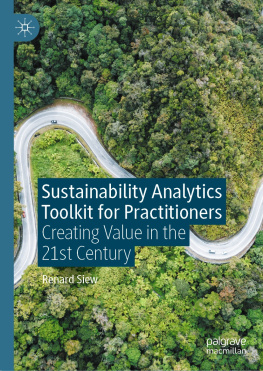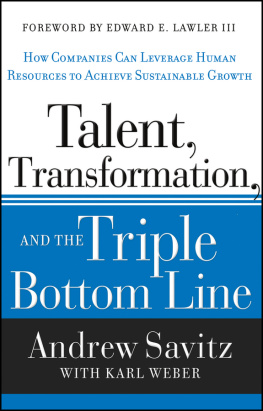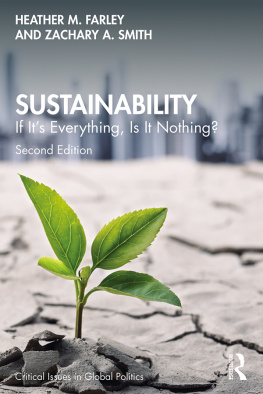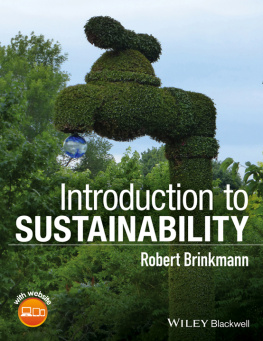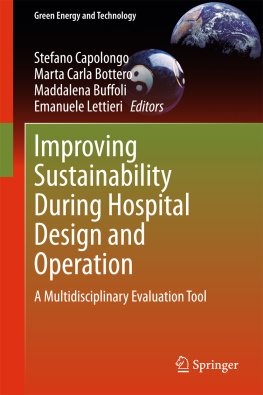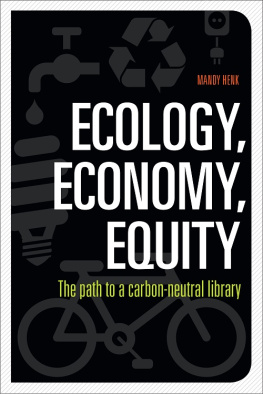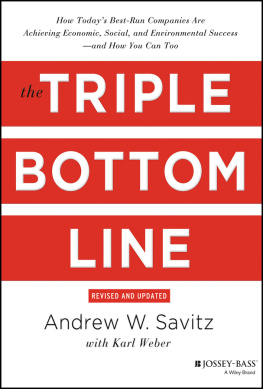CREATING THE SUSTAINABLE PUBLIC LIBRARY
The Triple Bottom Line Approach
Gary L. Shaffer

Copyright 2018 by Gary L. Shaffer
All rights reserved. No part of this publication may be reproduced, stored in a retrieval system, or transmitted, in any form or by any means, electronic, mechanical, photocopying, recording, or otherwise, except for the inclusion of brief quotations in a review, without prior permission in writing from the publisher.
Library of Congress Cataloging-in-Publication Data
Names: Shaffer, Gary L., 1963- author.
Title: Creating the sustainable public library : the triple bottom line approach / Gary L. Shaffer.
Description: Santa Barbara, California : Libraries Unlimited, an imprint of ABC-CLIO, LLC, [2018] | Includes bibliographical references and index.
Identifiers: LCCN 2018007763 (print) | LCCN 2017053414 (ebook) | ISBN 9781440857034 (ebook) | ISBN 9781440857027 (paperback : acid-free paper)
Subjects: LCSH: Public librariesUnited StatesAdministration. | Public librariesUnited StatesPlanning. | Public librariesAdministration. | Public librariesPlanning.
Classification: LCC Z678 (print) | LCC Z678 .S478 2018 (ebook) | DDC 025.1/974dc23
LC record available at https://lccn.loc.gov/2018007763
ISBN: 978-1-4408-5702-7 (paperback)
978-1-4408-5703-4 (ebook)
222120191812345
This book is also available as an eBook.
Libraries Unlimited
An Imprint of ABC-CLIO, LLC
ABC-CLIO, LLC
130 Cremona Drive, P.O. Box 1911
Santa Barbara, California 93116-1911
www.abc-clio.com
This book is printed on acid-free paper 
Manufactured in the United States of America
This book is dedicated to the memory of my mother, Sherrill Wieland Shaffer, and my grandmother, Laverne (Verna) Wieland. If brains are built and not handed out, these two women built mine.
Contents
Authors Note
This book uses terms such as customer and community member instead of patron and citizen . The former is used because, to the author, it better implies a sense of service; the latter, because not all individuals using public libraries are citizens. When coming across these words in the text, readers should substitute whatever words they feel most comfortable using. However, readers also know that words are important and that the use of different words implies different meanings. When ones existence or ones institutions existence may hinge on the use of a particular word such as customer versus patron or user , she or he will happily take up the word, whereas others, under less threat, may continue to remain less cautious.
Preface
I wrote this book out of a profound sense of love, respect, and wonder, which I hold for the institution that is the public library. I truly believe that beyond my parents and grandparents, the public library was my first teacher, my first window onto the world. As a child, every two weeks without fail, I and my two brothers were transported to our local public library. Although my parents instilled a love of reading, the library was where I got my profound need to read fulfilled. An early user of the card catalog, I would look up any manner of subject in which I was interested and be connected to a book on that topic. I was a voracious reader and the library satiated my hunger for knowledge. One of my happiest memories was the day I learned that I was not limited to just the books in the childrens library, but could also check out books in the grown-up section of the library where my mother and older brother were browsingthough I was not yet age 11.
Today, I am proud of the way my fellow citizens across the country fund public libraries and often support them in the voting booth and when taking surveys. This said, as a former library system CEO of six years, I feel the institution is under threat. This threat comes from false beliefs about what is freely available on the Internet, as well as a lack of understanding of all the amazing services and lifelines that public libraries provide. I do not, however, lay the blame for this threat squarely at the feet of my fellow citizens, politicians, or their colleagues in city and county government. Rather, I feel it is up to those of us who work in public libraries and the public library sphere to better enlighten our community members about the value of the institution, just as we have done with the dispensing of knowledge throughout the decades.
This book is meant to provide those working in public libraries a way to ensure the sustainability of their institutions, using tools and frameworks that are prevalent in todays business world. This book could also be considered a public library management text that suggests a sustainability framework as the best means to run a public library. Although triple bottom line (TBL) sustainability was brought into being by work out of the United Nations and the business world, it is applicable to all types of organizations. In addition, even though this book is presented through the lens of TBL sustainability, the majority of the practices suggested were born in public libraries or are heavily used by many leading public libraries. Thus, it is a homegrown text. The goal of the book is to ensure the long-term sustainability of the institution of the public library: Not to have it limp along in something remotely resembling its present state, but rather to have it thrive in an adaptive way to help ensure the successful support of our collective communities hopes, wishes, and dreams.
I am eternally grateful to the libraries and companies that participated in the research that informs this book. Without their open and honest sharing, as well as their gift of their valuable time, this book would not have been possible.
I hope you will enjoy reading this book as much as I have enjoyed assembling it for you. Additionally, after you have begun to incorporate the practices described within its cover, I know you will be well on your way to your sustainability journey and to a library that thrives, not just survives!
Warm regards,
Gary L. Shaffer, PhD
Acknowledgments
This book is my thank-you note to the thousands of public library administrators, librarians, and library workers who dedicate their lives to helping community members change their lives for the better. All of you and your communities deserve sustainable public libraries. I would also like to thank Susan Grode for her timely and thorough advice, as well as Jim Matarazzo, Toby Pearlstein, and Mnica Coln-Aguirre for their oversight of my dissertation, which greatly informed this book. To the company sustainability practitioners, public library directors, and deputy director who participated in my research (you know who you are) from the bottom of my heart, thank you. Finally, I would like to acknowledge Blanche Woolls, Emma Bailey, and their colleagues at Libraries Unlimited for their tireless work in preparing this manuscript for publication.
What Is Triple Bottom Line (TBL)?
TBL covers the three aspects of sustainability. It moves the conversation of sustainability beyond just the environment to incorporate economic and social aspects as well. This could be for a single organization, a community, or a whole society. After all, if an organization is environmentally sustainable, ever-mindful of the planet and taking every possible precaution to not harm the environment, but instead enrich it, yet finds itself financially unable to sustain its operation, then the organization is not truly sustainable.
The same goes for an organization that operates in a vacuum within its community. Again, the organization may be diligent about minimizing its energy use or working hard to use only renewable energy such as wind, solar, or geothermal, but if it does not also support educational achievement in the local community from which it draws its workforce, again that organization would not truly be sustainable.
Next page

